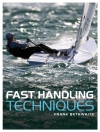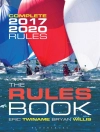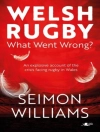An In Depth Guide to Sports opens with a review of the study of different biochemical profiles, through the analysis of the results obtained in different works carried out by a biochemical group and based on the literature reviewed. Biochemical profiles will be analysed: haematological, endocrinological and clinical chemistry of athletes who perform team sports, with intermittent characteristics. The authors maintain that is also the object of study of the biochemical laboratory; and the implementation of scientific knowledge in a practical and appropriate way allows the medical professional to make timely and accurate decisions, prevent injuries and plan training. Next, the authors provide a broad overview of the exercise and sport psychology research with cognitive disabilities. First, they define cognitive disability and discuss common terms used in the literature. Second, they differentiate between physical activity (PA) and exercise, review PA guidelines, and discuss PA measurement issues. Third, they focus on four specific cognitive disabilities: Autism Spectrum Disorder (ASD), Attention Deficit Hyperactivity Disorder (ADHD), Down Syndrome (DS), and Traumatic Brain Injury (TBI). Next, the authors examine how playing football competition at terrestrial altitude is not an isolated phenomenon. For instance, eight of the last 19 football FIFA World Cup tournaments were hosted by countries located at low-to-moderate altitude. While football-required fitness and technical qualities are affected by the development of neuromuscular fatigue at sea level, hypoxia-induced decrease in convective oxygen transport further hinders the aerobic capacity but also the ability to perform consecutive sprints, eventually impacting the outcome of a game. The aims of the subsequent chapter are to present (i) the football match- and training-induced responses when performed in hot and/or humid conditions and (ii) the strategies employed to better cope with such challenging environments. Heat acclimatization/acclimation appears as the primary strategy to minimize the thermal stress and the physiological risks of heat-related illnesses when playing football in hot conditions. This can be partly achieved after 6-10 days of training in the heat, with a targeted minimal core temperature of 38.5A(deg)C for at least 60 min in each training session, associated to elevated skin temperature and profuse sweating. The authors also discuss sports-related concussions (SRC) as a commonly sustained injury in the Rugby Union and the Rugby League. Possible benefits of wearing a mouthguard and clenching effects of SRC are thought to be; 1) increasing neck muscles activity resulting in stabilization of the head, 2) absorption and dissipation effects of a mouthguard material itself (against a direct blow to the chin), 3) a possibility of maintaining a space between the mandibular condyle and the fossa. However, the effect of mouthguard use to prevent concussions is still open to discussion. A case study is included which explores aspects of the volunteering experience that contribute to volunteers’ satisfaction in women’s rugby. Affective and cognitive components of satisfaction have been identified as significant among volunteers in English women rugby clubs. Understanding aspects of volunteer satisfaction will enable the Rugby Football Union (RFU) to tackle the decline in volunteer numbers and retain them within the rugby club network. Next, the authors aimed to compare the prosocial attitudes of rugby and soccer players. In Study 1, 58 rugbymen reported higher sportspersonship and collectivism than 51 male soccer players (21 years, SD = 1.61). They also showed lower individualism and reactive aggression. Study 2 used a broader sample of 82 elite male rugby and 138 soccer players (Mage = 22.3 years, SD = 6.04) who read a scenario in which a player simulated an injury in order to have the referee bring play to a halt (i.e., diving). The results of a MANCOVA (using age, games per season and sportspersonship as covariates) indicated that diving was less acceptable for rugby players who also used a deeper level of moral reasoning when deciding to use this behavior or not in competition. The concluding paper summarizes the authors’ experiments in scheduling the Finish Major Ice Hockey League. We give a detailed evolution of the practical issues as well as the academic findings concerning also the general sports scheduling problem. Our goal is to give new ideas to the academic researchers and to the sports practitioners.
Daniel Hak
In Depth Guide to Sports [PDF ebook]
In Depth Guide to Sports [PDF ebook]
¡Compre este libro electrónico y obtenga 1 más GRATIS!
Formato PDF ● Páginas 229 ● ISBN 9781536139112 ● Editor Daniel Hak ● Editorial Nova Science Publishers, Inc. ● Publicado 2018 ● Descargable 3 veces ● Divisa EUR ● ID 6877761 ● Protección de copia Adobe DRM
Requiere lector de ebook con capacidad DRM












